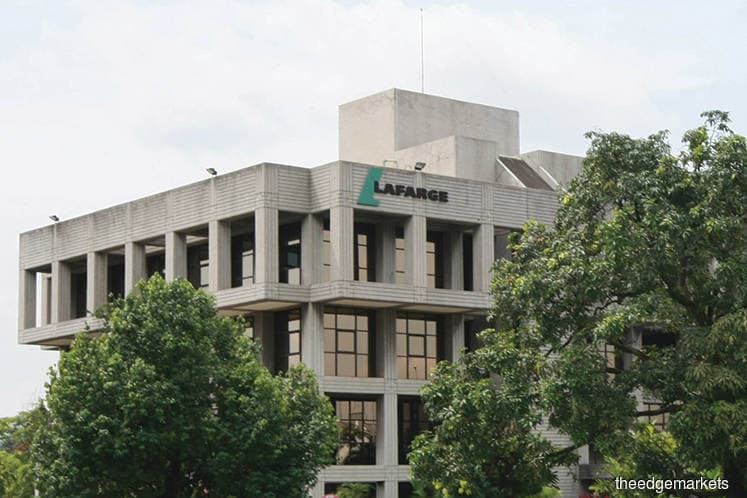
This article first appeared in The Edge Financial Daily on April 8, 2019
Lafarge Malaysia Bhd
(April 5, RM2.61)
Downgrade to sell with a target price (TP) of RM2: Lafarge foresees subdued domestic cement demand to continue in 2019. The recovery in the property market will take longer as the oversupply overhang and affordability issue continues to plague the industry. The potential revival of the East Coast Rail Link (ECRL) project is positive for the group as it had secured a cement supply contract previously. But we believe it is not sufficient to bump up the group’s domestic sales as it adds only 300,000 to 400,000 tonnes per year of cement sales over a three-year period. The cement export average selling price (ASP) has improved by about 20% in 2018 and is expected to be flat in 2019. We expect export volumes to improve in 2019, driven by clinker demand from Bangladesh and Sri Lanka. Though a pickup in domestic demand and prices remain the key factors for an earnings recovery, better export sales will help partially mitigate the impact of a subdued domestic market.
The current situation continues to put downward pressure on domestic cement prices. The domestic cement ASP was at its lowest in the fourth quarter of 2018, and Lafarge expects prices to pick up in 2019 as the current domestic cement price is not sustainable, given that most of the cement companies are making losses. The higher cost of production, partly due to higher energy costs, is likely to put pressure on domestic players to raise cement prices.
Production cost has been high partly due to the higher electricity cost — comprising about 20% of total production cost — as a result of a 3% increase in the effective electricity tariff from March 1, 2019. Coal cost (comprises about 30% of total production cost) remains high, though it moderated to about US$93-97 (RM380-397) per tonne in March 2019 compared to US$101-103 per tonne in December 2018.
The group reiterated its commitment to improving its cost efficiency. The installation of a fuel top-feed mechanism at its Rawang plant is expected to reduce the fuel cost by about 15% as the new coal mill will allow the usage of lower-grade coal as fuel for production. Meanwhile, the group’s ongoing restructuring initiatives are expected to further reduce selling, general and administration costs. This will partly offset the impact of the higher electricity cost as the effective tariff surcharge was increased to 2.55 sen per kWh (from 1.35 sen per kWh previously) effective from March 1, 2019, with an unchanged base tariff of 39.45 sen per kWh. Lafarge is also undertaking an asset rationalisation exercise currently with plans to dispose of some non-core assets worth about RM150 million to reduce its net gearing of 0.3 times as at Dec 31, 2018.
We maintain our financial year 2019 estimate (FY19E) core net loss and widen our FY20E core net loss from RM12 million to RM95 million as we believe it will take longer for the property market to rebound. The overhang of unsold properties remains high at 30,115 units, while housing starts declined by 10% year-on-year to 93,998 units in the nine months of 2018. We expect property developers to focus on clearing inventories, suggesting fewer new launches of property projects. In addition, we expect cement demand from infrastructure projects to pick up in 2020 as infrastructure project awards will only start to pick up in the second half of 2019.
Our unchanged TP of RM2 is based on a 2019E price-to-book ratio of 0.8 times. The stock price has run up recently, partly due to the potential revival of the ECRL project and speculated sale of Lafarge Malaysia by its parent company Lafarge Holcim Ltd as part of the group’s rationalisation exercise. Fundamentally, we do not see any immediate catalyst for a turnaround, given the prolonged weak domestic cement demand, stiff price competition and rising production cost.— Affin Hwang Capital, April 5